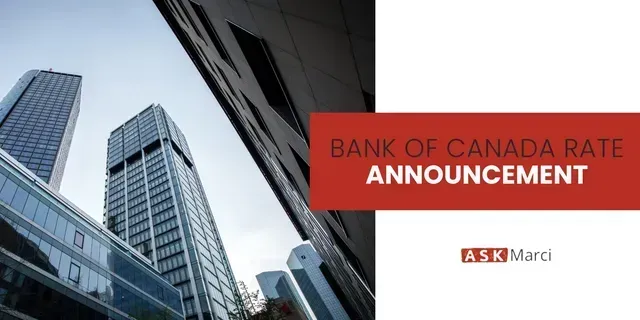Bank of Canada Kicks Off 2025 with a Rate Cut and Balance Sheet Normalization
The Bank of Canada has lowered its overnight rate by 25 basis points—the sixth cut since June last year. It also plans to end quantitative tightening and normalize its balance sheet.
This brings the BOC rate to 3.00% and we expect lenders to cut their Prime Lending rate to 5.20%. This is all good news and will help variable rate mortgage holders.
However, the Bank warns of "more-than-usual uncertainty," especially with potential U.S. trade tariffs on the horizon. To say that predictions about future rate trajectory are tricky is quite the understatement at this point. Below is a summary of all the factors impacting the Canadian Economy, the Bank of Canada and interest rates right now.
Canadian Economy & Housing
- Lower rates are boosting the economy, with consumer spending and housing activity picking up.
- Business investment remains weak.
- Exports should benefit from new oil and gas capacity.
Inflation Outlook
- CPI inflation is near 2%, though temporarily affected by the GST/HST suspension on some goods.
- Housing costs are still high but gradually easing.
- Broad indicators suggest underlying inflation is very close to the 2% target.
- The Bank expects inflation to remain near 2% over the next two years.
Labour Market
- Unemployment sits at 6.7%, signaling a soft labour market.
- Job growth has picked up after lagging behind workforce expansion.
- Wage pressures are easing, but progress has been slow.
Global Economy, Bond Yields & Canadian Dollar
- Global GDP is expected to grow 3% annually over the next two years.
- U.S. growth is stronger than expected, while Europe lags.
- China’s economy is stabilizing after recent policy support.
- U.S. bond yields have risen, but Canadian yields are down slightly.
- The Canadian dollar has weakened against the U.S. dollar due to trade uncertainty.
- Oil prices have been volatile, recently settling about $5 higher than October projections.
Other Key Announcements
- The Bank will complete balance sheet normalization and resume asset purchases in March 2025.
- With inflation near 2% and the economy in excess supply, the Bank deemed a rate cut necessary.
- The impact of rate cuts since June has been "substantial," fueling household spending and gradual economic strengthening.
Outlook from the BOC today:
- The Bank projects 1.8% GDP growth for both 2025 and 2026.
- Lower immigration targets will slow population growth, moderating overall economic expansion.
- The risks in the outlook are "reasonably balanced" unless U.S. trade tensions escalate, which could weaken GDP and push prices higher.
- The Bank reaffirmed its commitment to price stability.
Bottom line: The Bank is cutting rates to support growth, but uncertainties—especially trade risks—loom large. So, what to do? Variable rate or Fixed rate? The jury is out on this for the moment but less risk averse borrowers may want to consider a Variable if they believe recessionary pressures will push rates down. The counter argument to this is that Tariffs could cause inflation and thus, push the BOC to increase rates.
Given this chance, risk averse borrowers might therefore prefer to “set it and forget it” with a fixed rate. It comes down to a very personal decision and analyzing the financial position and future goals for each borrower.
Please reach out to review your personal plans and we can help you weigh the risks based on your personal financial situation.
It was an honour to be asked by CTV to share some thoughts on all of this and the local real estate market. You may have caught me on the early news last night, or you can read the article.
Share












